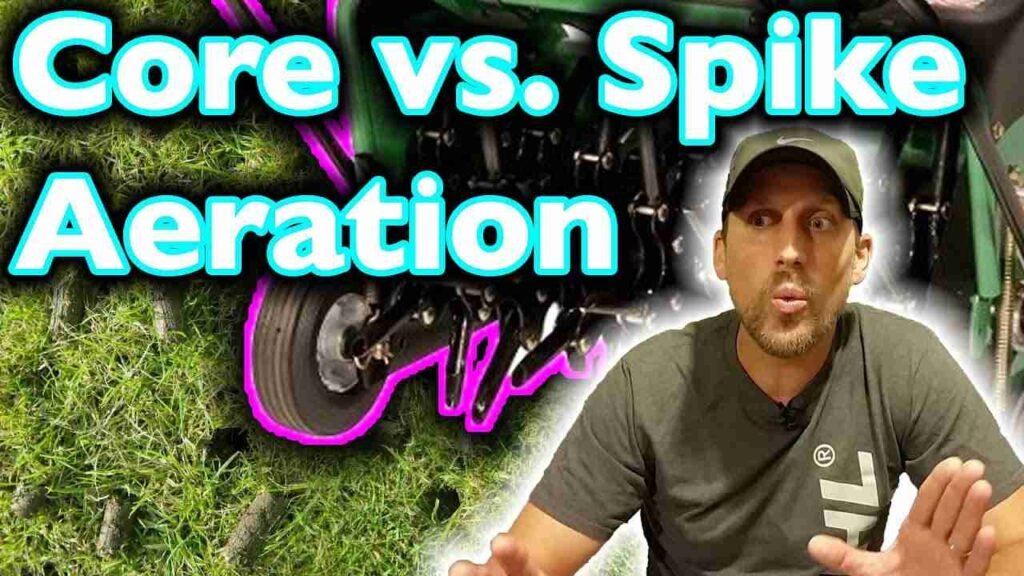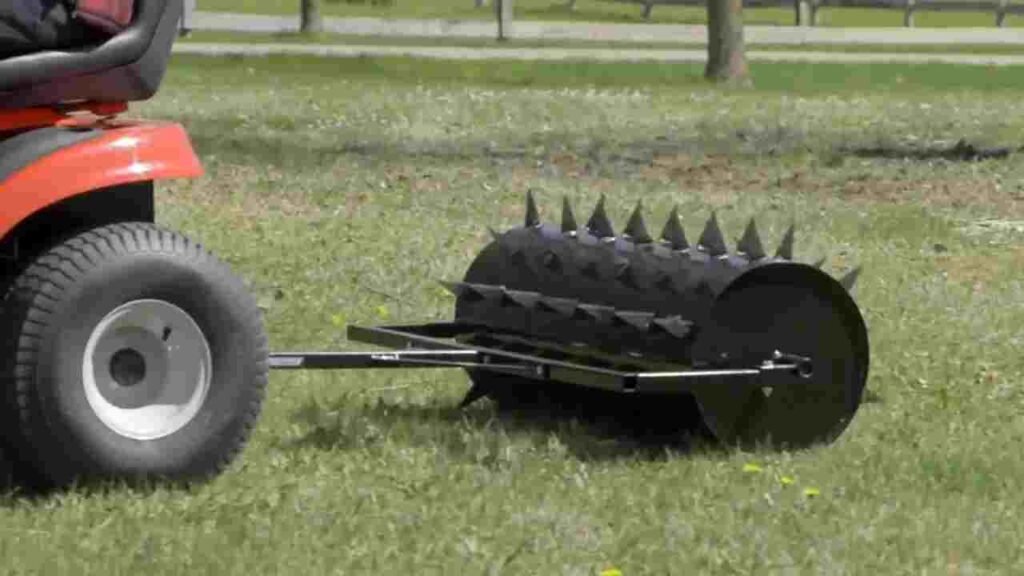When it comes to keeping your lawn in Tilton, NH, healthy and lush, aeration is a crucial step in maintaining its vitality. Aeration involves perforating the soil with holes to allow air, water, and nutrients to reach the grass roots more effectively. However, not all aeration methods are created equal. Two popular techniques are core aeration and spike aeration, each offering distinct benefits and suited for different situations. Core aeration removes small plugs of soil from the lawn, which can improve soil structure and reduce compaction. In this guide and with the help of Superior Hydroseeding Liquid Lawns, we will explore the differences between these methods, their benefits, and how to choose the right one for your lawn’s specific needs.

Spike aeration, on the other hand, uses spikes to puncture the soil, which can be less invasive but might not be as effective in alleviating severe compaction. While it can provide temporary relief by increasing soil aeration, it may also lead to additional soil compaction around the puncture holes. Understanding the differences between these methods will help you choose the best approach for a thriving lawn. By evaluating your lawn’s specific needs and soil conditions, you can make an informed decision on aeration services that ensure optimal air, water, and nutrient penetration, resulting in a healthier and more vibrant yard.
Understanding Core Aeration: How It Works and Its Benefits
Core aeration involves removing small plugs of soil from your lawn, which creates holes that allow air, water, and nutrients to penetrate deeper into the soil. This method helps reduce soil compaction, improve root development, and enhance the overall health of your lawn. By extracting these soil plugs, core aeration creates a more favorable environment for grass roots to grow, leading to a stronger, more resilient lawn. Additionally, it helps thatch break down more efficiently and promotes better water infiltration. Aeration combined with soil testing is particularly beneficial, as it identifies soil health issues and guides appropriate amendments. This method is especially useful for lawns with heavy foot traffic or clay soil, where compaction is more likely to occur.
Exploring Spike Aeration: Techniques and Advantages
Spike aeration involves using spikes or tines to puncture the soil, creating holes that allow for increased air and water movement. This method can be less invasive compared to core aeration, as it doesn’t remove soil but instead creates channels through which water and nutrients can reach the roots. Spike aeration can be beneficial for lawns with less severe compaction or where a lighter touch is preferred. It’s a good option for lawns that don’t require extensive relief from compaction but still need some improvement in air and water flow. Typically, the best months for spike aeration are during the growing season when your lawn is actively growing, as this ensures optimal recovery and growth. However, it may not be as effective for lawns with severe compaction issues.
Comparing Core and Spike Aeration for Soil Compaction
Core and spike aeration are two popular methods for addressing soil compaction, each with its own advantages and limitations. Core aeration removes soil plugs, which helps relieve compaction and improve soil structure, making it more effective for severe compaction problems. In contrast, spike aeration creates holes by puncturing the soil but does not remove any material, which can be less effective in relieving deep compaction. Core aeration is generally preferred for heavily compacted soils and lawns with heavy foot traffic, while spike aeration may be suitable for lighter compaction or maintenance between core aeration sessions. Understanding the differences between these methods is essential for selecting the right aeration approach to address compacted soil and maintain a healthy lawn.
When to Choose Core Aeration for Your Lawn
Core aeration is best suited for lawns experiencing significant soil compaction, poor water infiltration, or dense thatch buildup. It’s particularly effective in clay soils and lawns with high foot traffic, which can lead to compacted soil layers that inhibit root growth. Core aeration is ideal during the growing season, typically in the spring or fall, when grass is actively growing and can recover quickly. If your lawn shows signs of water pooling, patchy growth, or difficulty in absorbing nutrients, core aeration can provide the relief it needs by enhancing soil structure and promoting healthier grass growth.
When Spike Aeration is the Right Choice
Spike aeration can be an effective choice for lawns with light to moderate compaction or those needing a less invasive approach. It is suitable for lawns that don’t have severe compaction issues but could benefit from improved air and water movement. Spike aeration is also useful for maintaining lawn health between core aeration sessions or for addressing compacted areas where core aeration may be too disruptive. It’s often employed in the summer when grass is actively growing and can recover quickly from the aeration process. Choose spike aeration for routine maintenance or when a lighter touch is needed.

Impact of Core Aeration on Lawn Health and Growth
Core aeration significantly enhances lawn health by reducing soil compaction, which allows roots to grow deeper and access essential nutrients and water. This method improves air circulation in the soil, leading to stronger and more resilient grass. Core aeration also helps in breaking down thatch, a layer of organic matter that can prevent water and nutrients from reaching the roots. As a result, lawns treated with core aeration often experience increased green-up, better drought resistance, and overall improved growth and density. This method contributes to a healthier lawn ecosystem by fostering better soil conditions and supporting robust root systems.
Potential Drawbacks of Spike Aeration
While spike aeration can be less invasive and easier to perform, it has some potential drawbacks. One major issue is that it may not effectively relieve severe soil compaction, as it only creates holes rather than removing soil. This can lead to a temporary improvement in soil aeration but may not address deeper compaction layers. Additionally, spike aeration can sometimes contribute to additional compaction around the puncture sites, particularly if performed on already compacted soils. It’s important to evaluate the extent of your lawn’s compaction before choosing spike aeration to ensure it meets your needs effectively.
How to Determine Which Aeration Method Your Lawn Needs
Determining the best aeration method for your lawn involves assessing the level of soil compaction, soil type, and overall lawn health. Start by evaluating your lawn for signs of compaction, such as poor water infiltration, patchy growth, and dense thatch. For severe compaction or clay soils, core aeration is typically more effective, as it removes soil plugs and improves soil structure. If your lawn has lighter compaction or requires routine maintenance, spike aeration may be sufficient. Consider the time of year and the grass type as well, as these factors can influence the effectiveness of each aeration method.
Preparing Your Lawn for Core and Spike Aeration
Proper preparation is key to maximizing the benefits of core and spike aeration. Begin by mowing your lawn to a shorter height, which allows the aeration equipment to reach the soil more effectively. Water the lawn thoroughly a day or two before aeration to ensure the soil is moist but not soggy, which makes it easier for the equipment to penetrate the soil. Mark any sprinkler heads, underground utilities, or other obstacles to avoid damage during the process. For core aeration, consider removing any debris or thatch buildup to improve the efficiency of the aeration. Proper preparation ensures that the aeration process is as effective as possible.
Maintaining Your Lawn After Aeration: Best Practices
After aeration, proper maintenance is crucial to help your lawn recover and benefit fully from the process. Keep the lawn well-watered to encourage quick recovery and root development, especially if the aeration is done during dry periods. Avoid heavy foot traffic or lawn use immediately after aeration to prevent disrupting the newly exposed soil. Fertilize the lawn to promote strong growth and take advantage of the improved nutrient access. Continue regular lawn care practices, such as mowing and watering, to support the lawn’s health and growth following aeration. By following these best practices, you can enhance the results of the aeration and achieve a healthier, more vibrant lawn.
Common Myths About Lawn Aeration Debunked
There are several myths about lawn aeration that can lead to confusion and improper practices. One common myth is that aeration is only necessary for heavily compacted lawns, but even healthy lawns can benefit from periodic aeration to maintain soil health. Another myth is that aeration causes more harm than good, but in reality, it promotes healthier soil and grass growth. Some people believe that aeration is only effective at certain times of the year, but many lawns benefit from aeration in both spring and fall. Debunking these myths helps homeowners understand the true benefits of aeration and how to properly incorporate it into their lawn care routine.
Conclusion
Choosing the right aeration method—core or spike—depends on your lawn’s specific needs and conditions. Core aeration, by removing soil plugs, offers significant benefits for severe compaction and promotes deeper root growth and better soil health. Spike aeration, while less invasive, may be suitable for lighter compaction and maintenance. Understanding the differences between these techniques and the best practices for lawn care can help you make an informed decision, ensuring that your lawn receives the appropriate treatment to thrive. Proper preparation and post-aeration care are essential to maximize the benefits and support robust, healthy grass. By selecting the right method and following best practices, you can achieve a lush, resilient lawn that enhances your outdoor space.
FAQs
What is core aeration and how does it benefit my lawn?
Core aeration involves removing small plugs of soil to reduce compaction and improve airflow, water, and nutrient penetration. This method enhances root growth and overall lawn health by relieving severe soil compaction.
How does spike aeration differ from core aeration?
Spike aeration uses spikes to puncture the soil, which can alleviate light compaction but may not address severe issues as effectively as core aeration. It’s less invasive but generally provides less improvement in soil structure.
When is the best time to perform lawn aeration?
The ideal time for lawn aeration is during the growing season when the grass is actively growing. For cool-season grasses, early spring or fall is best, while warm-season grasses benefit from summer aeration.
How often should I aerate my lawn?
Lawns typically benefit from aeration once a year. However, lawns with severe compaction or high traffic areas might require more frequent aeration to maintain optimal health and appearance.
What should I do after aerating my lawn?
After aeration, it’s important to water your lawn thoroughly to help the soil settle and the grass recover. Applying fertilizer and overseeding can also enhance the benefits of aeration, promoting robust growth.

